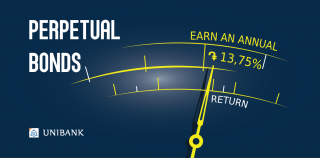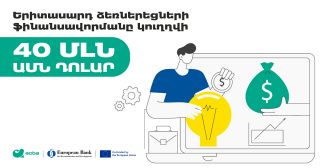
European cows show a “middle finger”: why don’t the Armenian government officials wish to support their farmers?

Similar to the soviet times when the officials would swear in front of the soviet flag, now as well the Armenian officials seemingly swear to speak only about the progress and development of the sectors they lead.
In one of its previous publications (Failure of cattle-breeding) 168-Zham newspaper brought up the development plan of cattle-breeding of 2007-2015. The program mildly said didn’t bring the expected results. The majority of the cattle imported from Europe died.
Although the head of the cattle breeding department of the RA ministry of agriculture Ashot Hovhannisyan insists that the heifers imported from Europe don’t have any problems of acclimatization here in Armenia, the constituents of the program, the Armenian farmers claim the opposite. After our publication Hovhannisyan suggested us visiting Agroholding CJSC, which in 2009 and 2010 respectively attained 120 and 166 heifers. We decided not to turn down Hovhannisyan’s suggestion and paid a visit to Agroholding. It turned out that the picture was sad here too. During 2010-2013 122 European heifers died. “The state program is offering very good conditions – during 4 years 10%, 20%, 30% and 40%. The problem is that when we imported these cows we didn’t have professional information. I am a vet, candidate of science but it is an unfamiliar animal for Armenia. We have had great loss. Now we have 1/3 left out of 286 cows,” said the founding director of Agroholding Armen Khechoyan. Moreover, a little after attaining the cattle all the animals were infected with a disease. The cows should have been sent to us vaccinated.
“The imported cattle should be in the 3-6 month cycle of pregnancy and must be vaccinated,” reads the government decision of March 22, 2007, N 336-A. Accoridng to Khechoyan the animals got infected and died because of diseases previously unknown in Armenia and there was no specialist to give necessary advice to the farmers. “I am a specialist. I read books day and night. I look for solutions but the farmers wouldn’t know.” According to him the cows imported from Europe have the necessity of acclimatization and we shouldn’t have imported these animals with closed eyes. There was no compensation for the dead animals. Because of the disease we had to postpone the project for one year. Currently the cows give an average of 7400 liters of milk daily. During the disease their milk was only 2500-3000 liters. “We had a great loss when the animals were shipped here. They were infected and weren’t milked. They daily eat nutrition worth 2500-3000 AMD. We were able to recover the situation during 1,5-2 years. That is the reason why no farmer maintains a disease cow. They slaughter them and sell. We didn’t have other options,” said Khechoyan and added that the acquittal of the cattle price is a good thing but the Armenian farmers also need advice and consultations. So far Agroholding has only paid off approximately half of the 270 million AMD debt. For each late day of payment, according to the contract with the ministry of agriculture, the company has to pay 0,05% penalty, which exceeds 3 million AMD and it increases day by day. According to Khechoyan only the milk sale is not enough to pay the penalty. Instead, there are 150 heifers in the farm, which are not sold to pay the debts.
“The farmers are willing to buy heifer at 1,2 million AMD and pay off the amount within 4 years and we are willing to sell it 20-25% cheaper than the market price. We have applied to the government and the ministry and agriculture and offered them 850 thousand AMD per heifer. These animals are localized and the farmers can personally pay site visits and examine the cows. Up until now we haven’t received a positive response from them. I know that all the farmers of Armenia, who had been a part of this program, are in the same situation and they owe a lot of money. And it is not clear why the heifers cannot be sold now at a cheaper price locally. Wouldn’t it be better if the money didn’t flow outside and stayed in the country? It would be profitable both for farmers and buyers,” mentioned our respondent. One of the constituents of the project Gagik Hovhannisyan was able to pay off the core sum of the borrowed loan – approximately 40 million AMD but as a result of it he doesn’t have a farm anymore.
During the launch of the project Hovhannisyan bought 22 heifers in 2008 (back then he was the co-owner of Tamara LTD, then he sold his share) and his other company Araler TOT bought 79 heifers. When speaking to us Hovhannisyan told that the animals started to give birth and the calves died soon after within 10 days because of a virus. There was no support from the ministry of agriculture despite their claims that all the animals should have been vaccinated. In Hovhannisyan’s words, he had imported medications from abroad from his own pocket in order to inject the infected animals. “This is a wrong project and they are still continuing it. It is not right to ship a pregnant animal. Animals get exhausted and die out. They need at least one year for adjustment,” mentioned Hovhannisyan. In order to avoid further problems Hovhannisyan sold his heifers each at 600-650 thousand AMD but the actual price was 1,2 million AMD. In the meantime, he has to protect his rights in court today. The problem is that within 5 years he has to pay 6 million AMD penalty. Moreover, if in the case of other farmers the penalty was 0,05% then in his case the penalty is 0,15%. It is not quite clear where this discrimination comes from. We have also written than the prosecutor’s office was also involved in the procedures of late payments. The first instance court has obliged Hovhannisyan to pay the debt but he is planning to appeal the verdict at the court of appeals.
To be continued
By Gayane Khachatryan
P.S. The government decision doesn’t necessarily require that the ministry of agriculture ship the heifers from abroad. The head of the department Ashot Hovhannisyan explains that the farmers for the heifers demanded as much money as it would cost to ship it from abroad – 1,2 million AMD. However, farmers tell us that the price is not more than 800-850 thousand AMD. Perhaps the media will succeed to explore the truth.
























